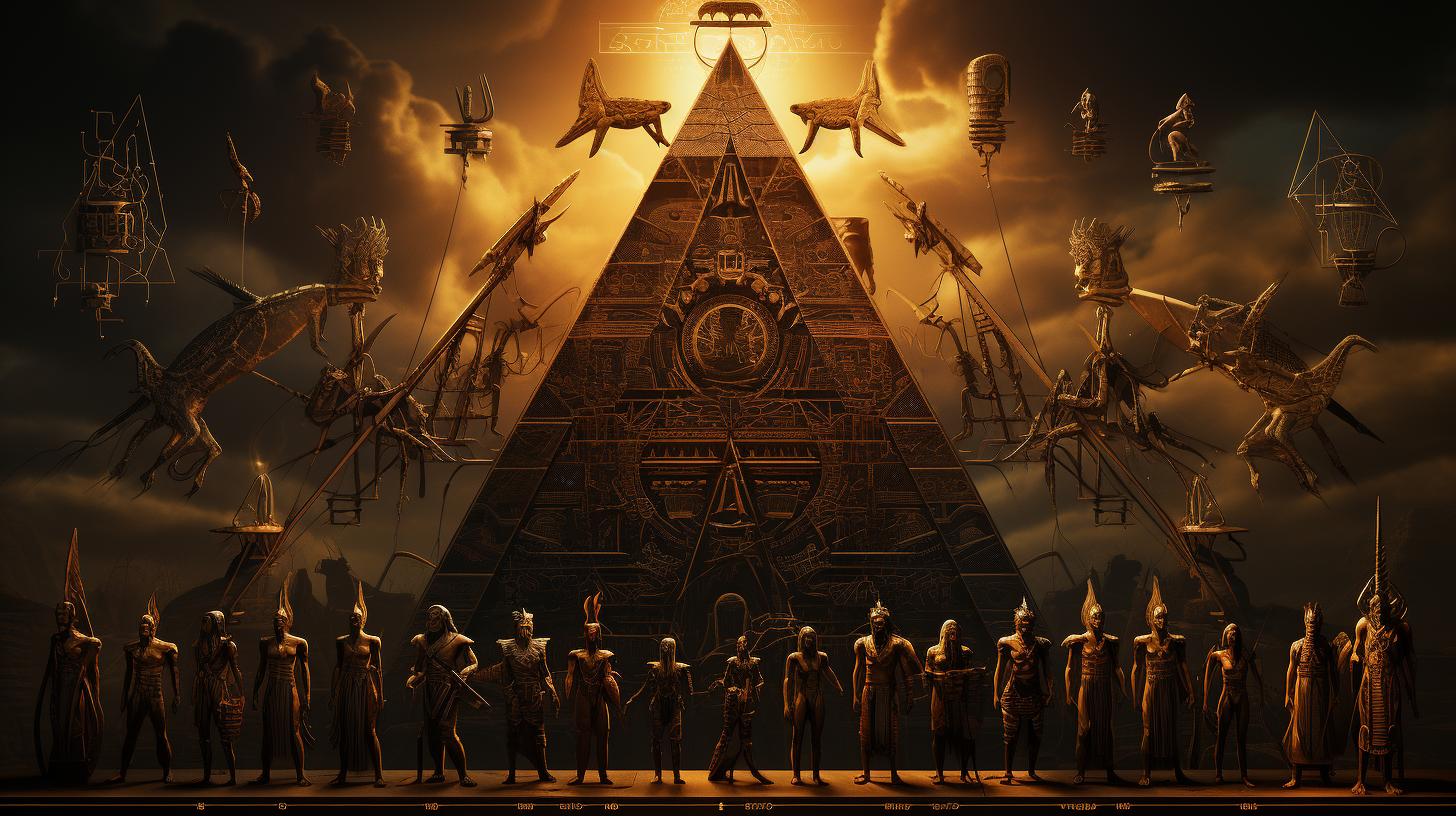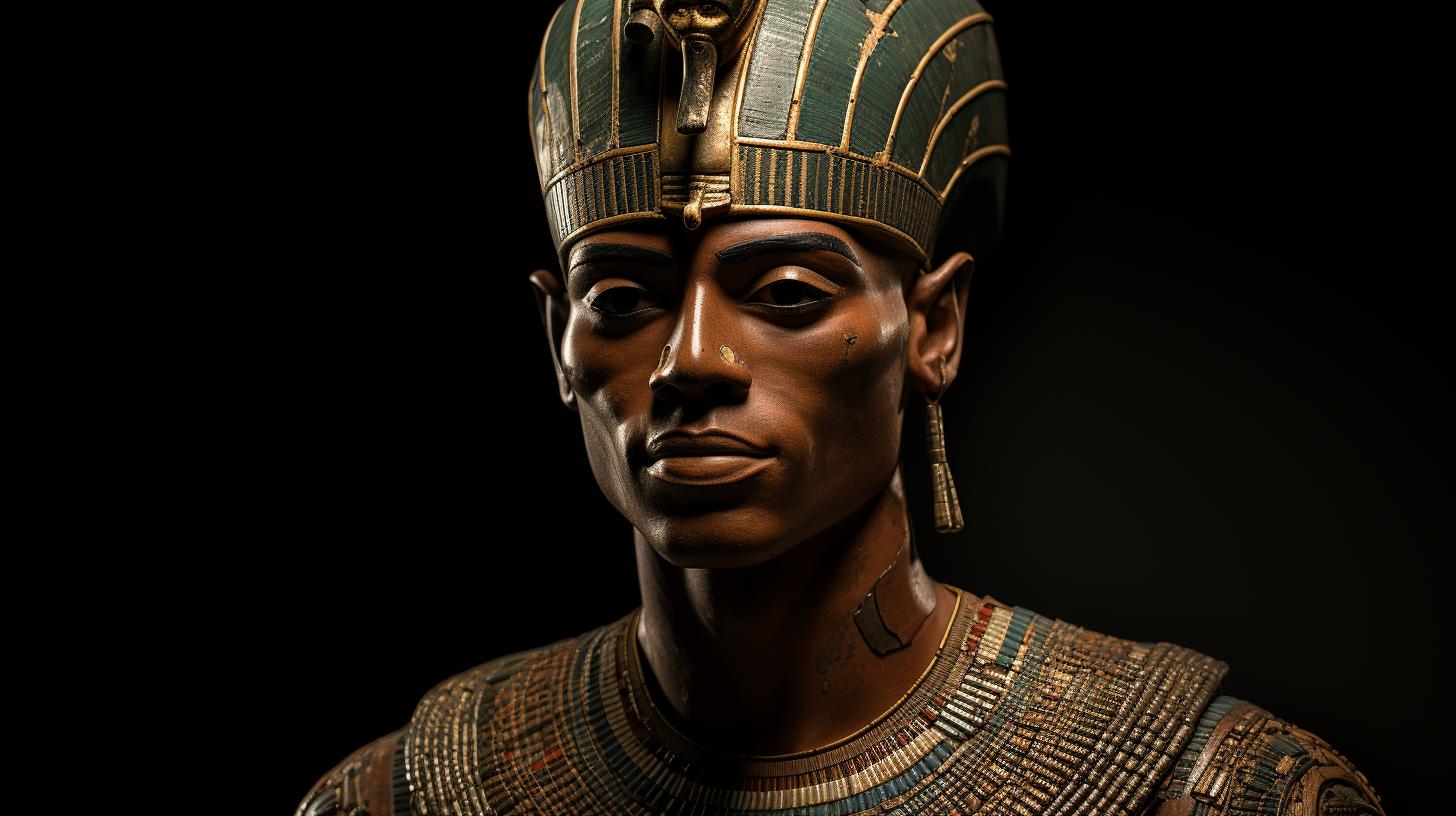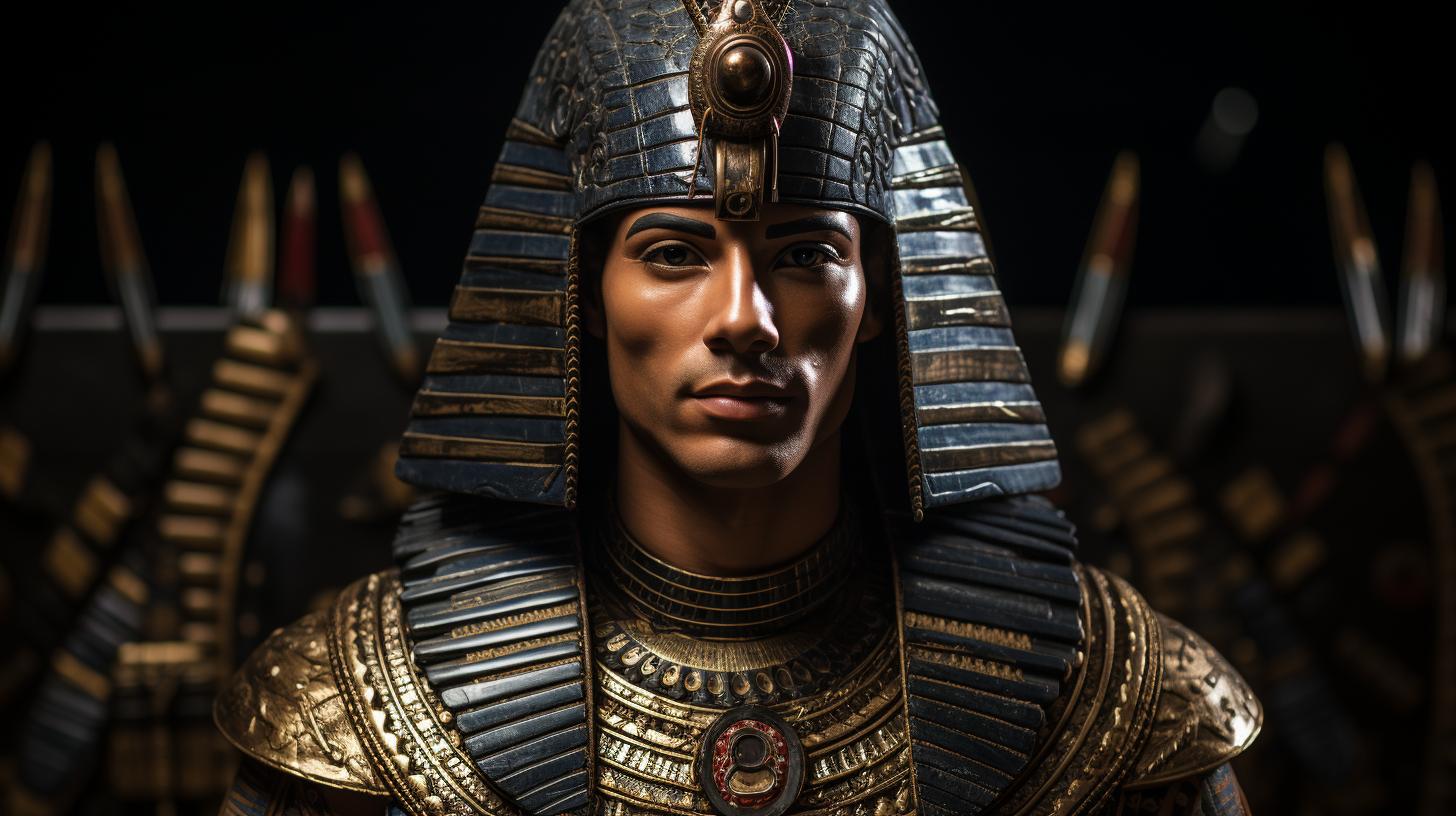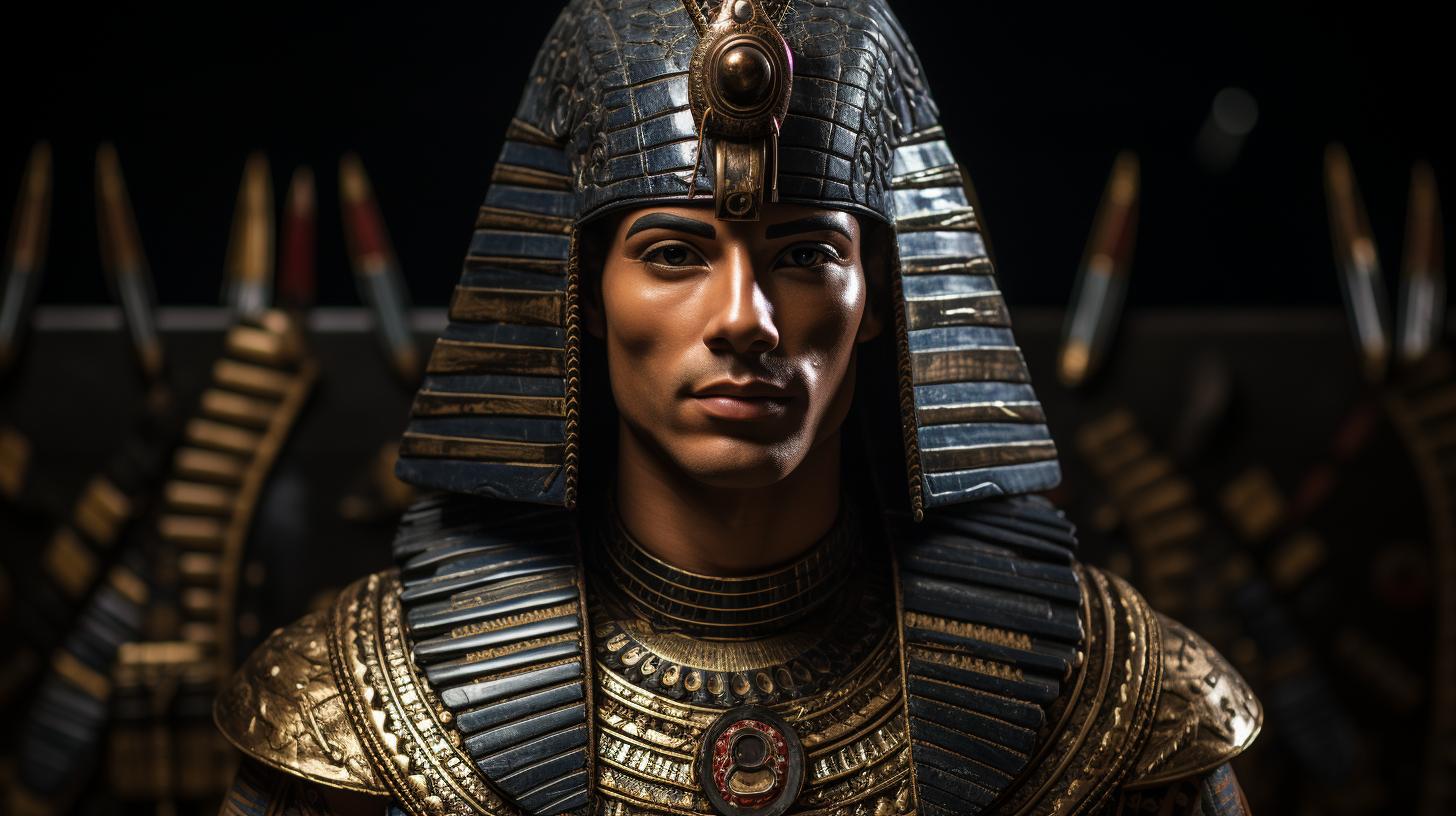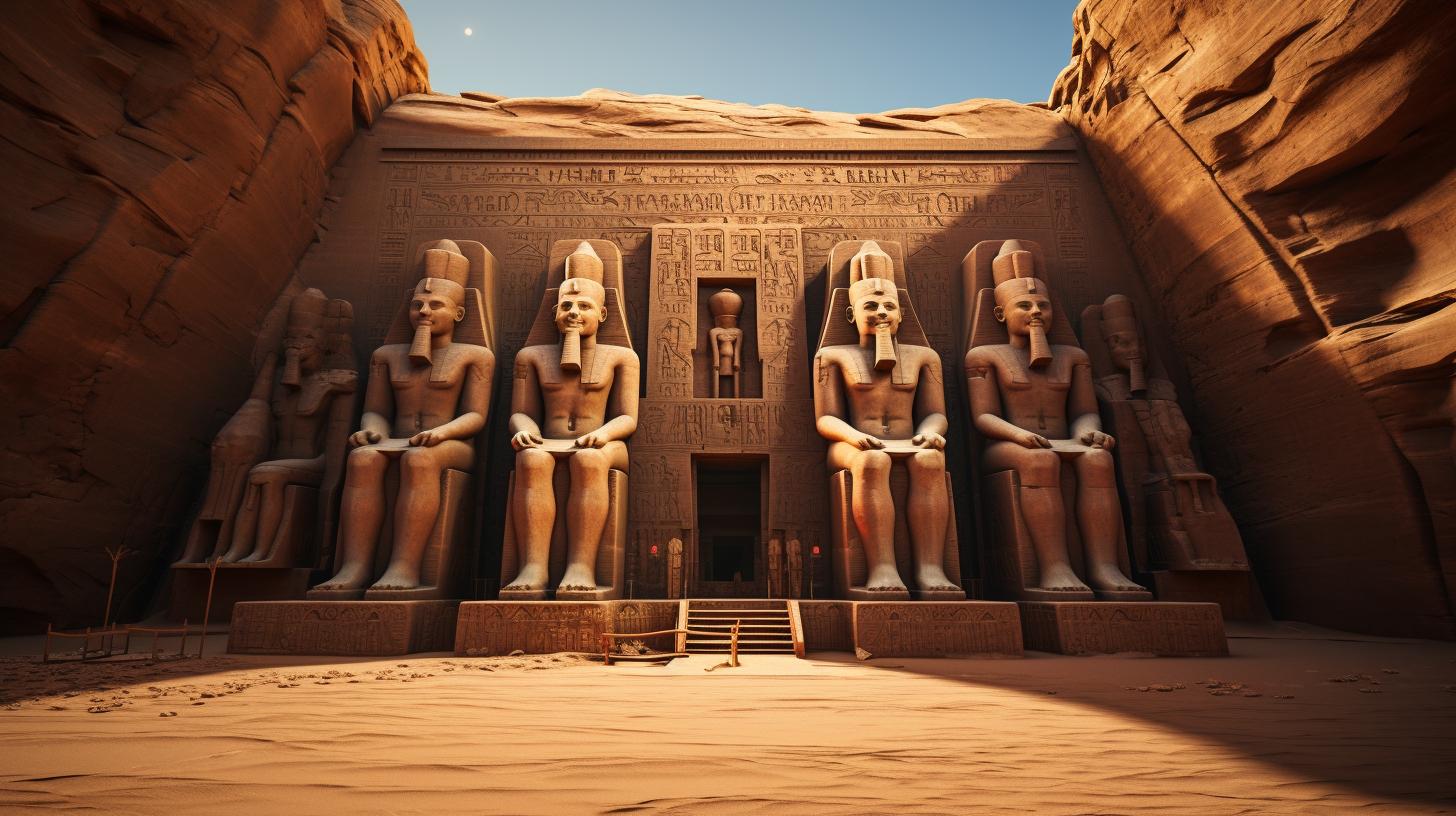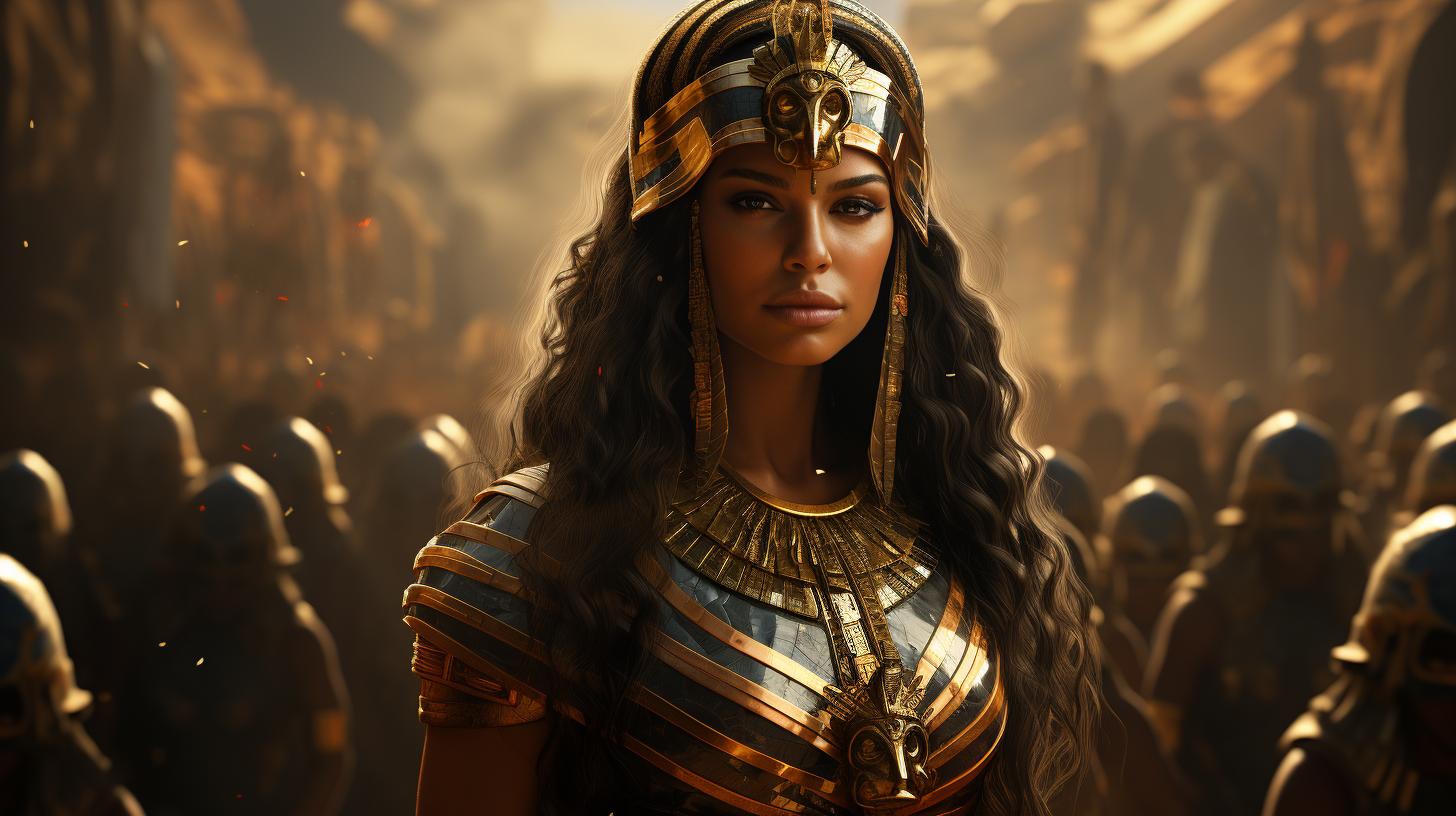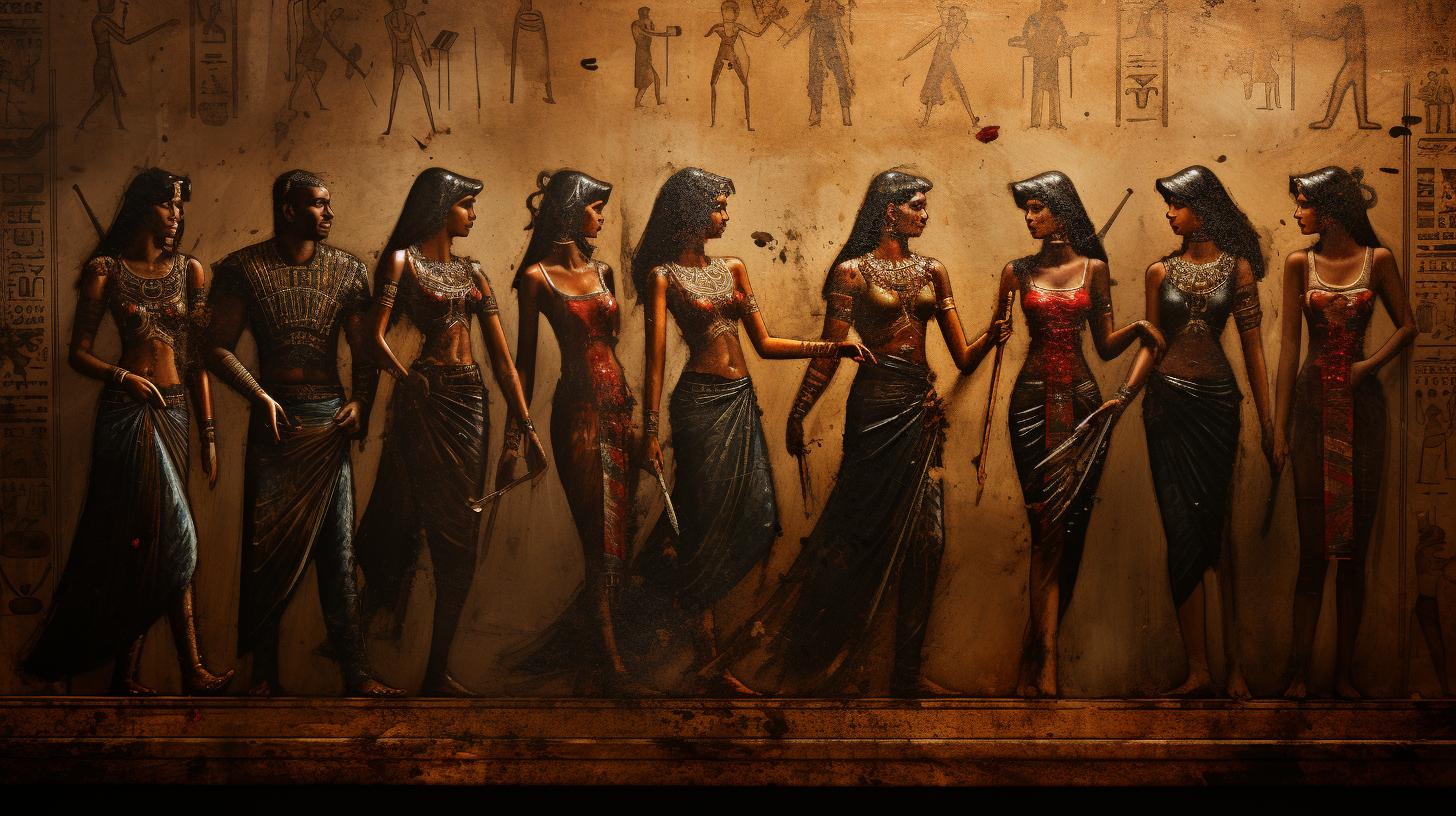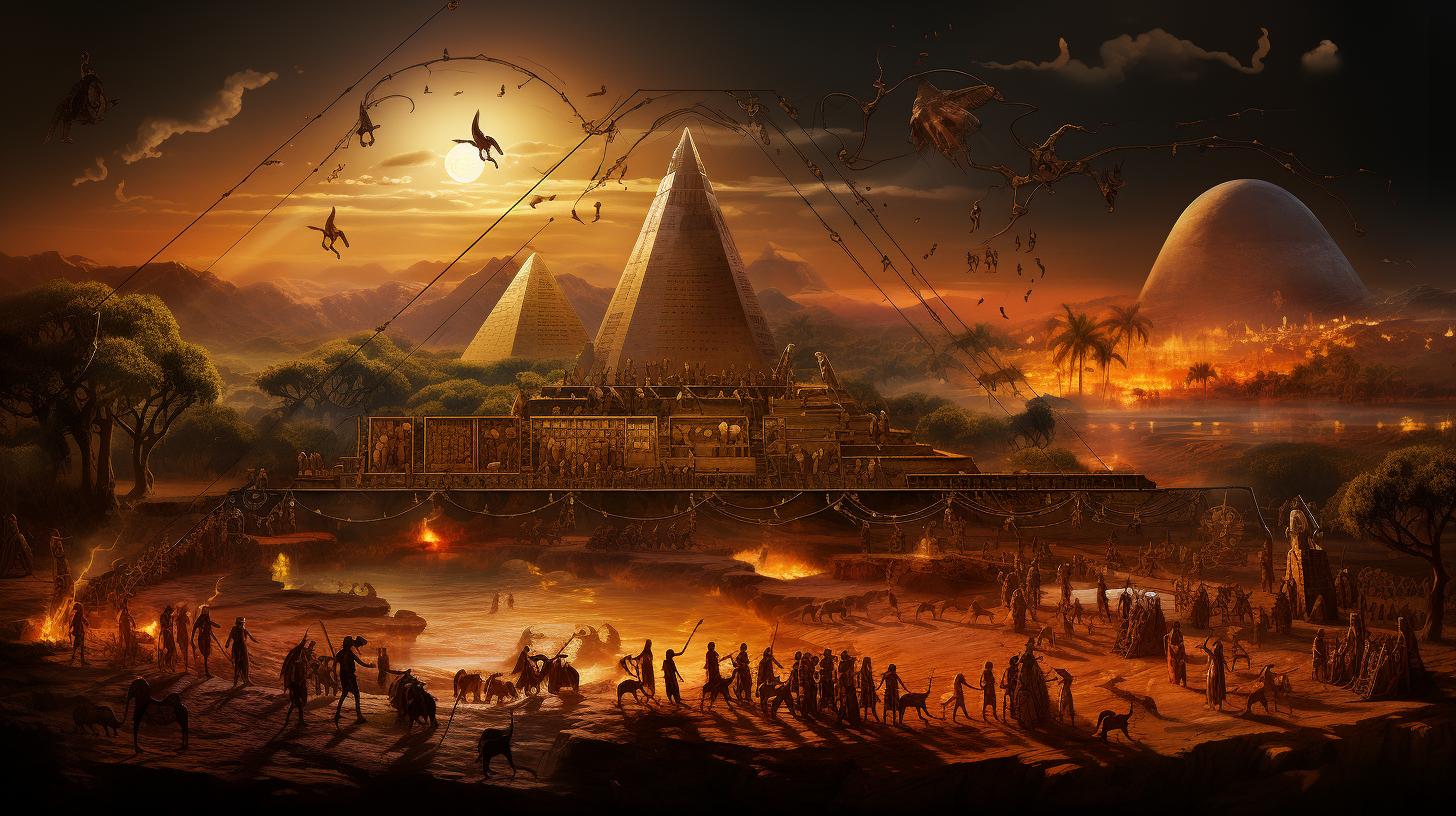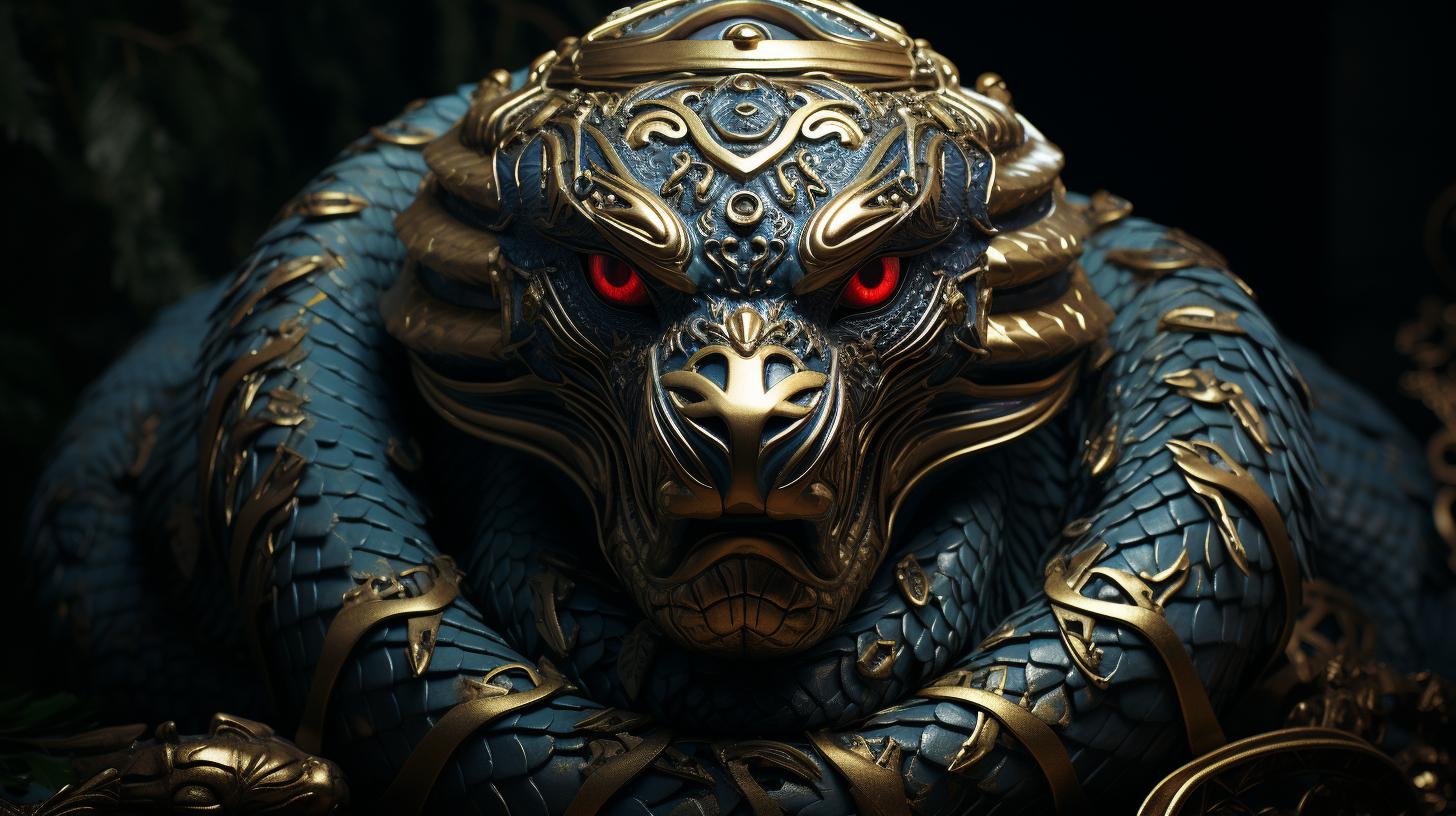Which Egyptian God is the Most Powerful: A Closer Look at Ancient Egypt’s Supreme Deity
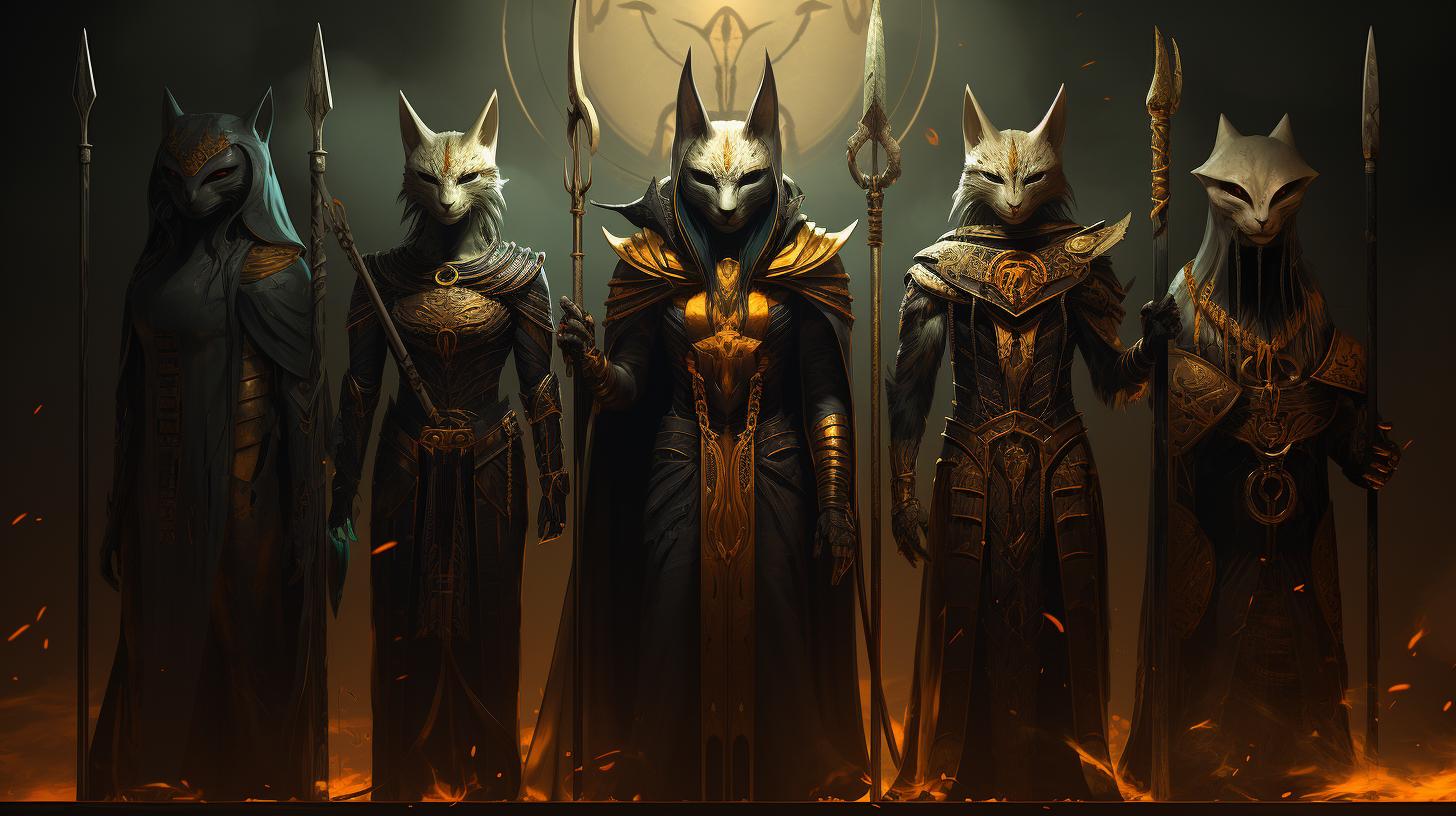
Ancient Egyptian mythology is filled with a diverse pantheon of gods and goddesses. One recurring question is, “Which Egyptian god is the most powerful?” To delve into this topic, we will explore prominent deities like Osiris, Horus, Isis, Amun, Set, Thoth, and others.
These gods played crucial roles in Egyptian society, ranging from rulership, creation, wisdom, to protection. Let’s uncover the intriguing stories and powers that make each of these gods significant in the intricate tapestry of Egyptian mythology.
Exploring Ancient Egyptian Mythology
Embark on a fascinating journey through the enchanting world of Ancient Egyptian mythology. In this section, we will delve into the intricacies of the Egyptian pantheon and the significant role that gods played in the lives of ancient Egyptians.
An Overview of the Egyptian Pantheon
The Egyptian pantheon consisted of a vast array of gods and goddesses, each with their unique characteristics and roles. From powerful deities associated with the sun, life, and death to those connected to nature and fertility, the pantheon reflected the diverse aspects of Egyptian culture and beliefs.
The Role of Gods in Ancient Egyptian Society
The gods held immense influence and authority in various aspects of Egyptian society, including religion, politics, and daily life. They were worshiped as protectors and providers, believed to bestow blessings and aid in both personal and communal matters.
The pharaohs, as divine rulers, sought guidance and legitimacy from these powerful divine beings.
Moreover, the gods played a crucial role in maintaining balance and order in the world. They represented the forces of creation, destruction, and regeneration.
Understanding their roles and significance is key to comprehending the power dynamics within Ancient Egyptian society.
Osiris: The God of the Afterlife
Osiris, one of the most revered gods in Ancient Egyptian mythology, holds a significant role as the deity of the afterlife. His captivating story and origins have been passed down through generations, enchanting both scholars and enthusiasts alike.
The Story and Origins of Osiris
According to ancient myths, Osiris was born to the sky goddess Nut and the earth god Geb. He became the first ruler of Egypt, introducing civilization and teaching humans the art of agriculture.
However, his brother Set grew jealous of his power and plotted a treacherous scheme to overthrow him.
Set tricked Osiris into entering a decorated chest, which he then sealed and cast into the Nile River.
Osiris drowned, and his body became hidden amongst the water currents.
Osiris’ wife and sister, Isis, tirelessly searched for his body, eventually finding it. With her magical powers, she resurrected Osiris, but he could no longer reside in the land of the living.
Osiris’ Dominion in the Underworld
As the god of the afterlife, Osiris presides over the realm known as the Duat, the Egyptian underworld. This mystical realm is where souls are judged and their eternal fate determined.
Osiris embodies the idea of rebirth and renewal, offering a pathway to the afterlife for those who pass the judgment.
Osiris rules with fairness and compassion, providing comfort and solace to the souls under his dominion.
His presence brings a sense of peace and guidance to the deceased as they navigate the trials and tribulations of the afterlife.
Osiris and the Judgment of the Dead
A crucial aspect of Osiris’ role is overseeing the judgment of the dead. During the Weighing of the Heart ceremony, a person’s heart is weighed against the feather of Maat, the goddess of truth and justice.
If the heart is lighter than the feather, it signifies a life led in accordance with Maat’s principles, and the soul gains entry into the blessed afterlife.
Osiris’ involvement in the judgment process ensures that fairness prevails, and righteous souls are rewarded.
His wisdom and keen judgment make him a revered figure in the hearts of the ancient Egyptians.
Horus: The God of Kingship
Horus, a significant deity in ancient Egyptian mythology, played a pivotal role in their beliefs and cultural practices. As the god of kingship, Horus symbolized not only the divine authority of the pharaohs but also their connection to the gods.
Horus in Egyptian Mythology
In Egyptian mythology, Horus was often depicted as a falcon-headed deity, representing power, protection, and divine leadership. He was believed to be the son of Osiris and Isis and the rightful heir to the throne.
Horus had a central role in the ongoing battle with Set, his uncle, who had murdered his father Osiris. This conflict turned Horus into a symbol of justice and the eternal struggle between good and evil.
Horus’ Connection to Pharaohs and the Kingdom
Horus’ association with kingship was fundamental in Ancient Egypt’s political structure. The reigning pharaohs were considered the earthly incarnation of Horus, embodying his divine guidance and wisdom.
It was believed that Horus granted pharaohs the authority to rule and ensured the prosperity and stability of the kingdom.
This divine connection between Horus and the pharaohs reinforced the idea of a harmonious and just society.
Horus as the Protector of the World
Beyond his role in royal power, Horus was also revered as the protector of the world. Egyptians believed that Horus guarded the sun and moon, ensuring their regular cycles and bringing light to the land.
As the savior and protector, Horus fought against chaos and evil forces, guarding both the mortal and divine realms. This perception of Horus as a divine guardian instilled a sense of security and hope in the hearts of the ancient Egyptians.
Isis: The Divine Mother and Lover
Isis, the goddess of magic, is revered in Ancient Egyptian mythology for her prominent role as the wife and sister of Osiris, as well as the mother of Horus. She embodies the divine mother and lover, with her story intricately tied to the legend of Osiris.
The Legend of Isis and Osiris
The legend of Isis and Osiris is one of the most well-known tales in Egyptian mythology.
It tells the tragic story of Osiris, who was murdered by his brother, Set, out of jealousy. After his death, Isis embarked on a quest to resurrect Osiris, symbolizing her unwavering devotion to her beloved.
Isis’ Influence in Egyptian Mythology
Isis was not only known for her love and devotion, but also for her profound influence in Egyptian mythology. She played a crucial role in the story of Ra, the sun god, by creating a magical serpent to heal him and, in return, gaining insight into his true name, which bestowed upon her immense power.
The Powerful Magic of Isis
Isis was renowned for her mastery of magic, holding the secrets of spells and rituals. Her ability to wield powerful magic made her a revered figure in Egyptian society. She was often depicted with wings, representing her elevated status and association with divine knowledge and guidance.
Isis’ magical prowess was not only used for her personal gain, but also for the benefit of others. She was known for her willingness to help those in need, offering her power and divine assistance to heal the sick, protect the vulnerable, and guide lost souls to the afterlife.
In conclusion, Isis, the divine mother and lover, holds a significant place in Ancient Egyptian mythology. Her unwavering devotion to Osiris, her influential role in the pantheon, and her mastery of powerful magic make her a revered and respected goddess around the world.
Amun: The Hidden One and God of Creation
Amun holds a significant place in Egyptian beliefs and mythology. Known as “The Hidden One,” Amun is often depicted as a human figure wearing a tall, plumed crown, symbolizing his status as king of all gods.
His name, meaning “the hidden,” represents his mysterious and omnipresent nature.
Amun in Egyptian Beliefs
In Egyptian beliefs, Amun rose to prominence during the Middle Kingdom period, when he merged with the sun god Ra to become Amun-Ra, the supreme creator deity. The Egyptians considered Amun as the primeval god, the driving force behind creation and the one who maintained the harmony of the universe.
Amun’s Role in the Creation of the Universe
Amun’s role in the creation of the universe was of great importance. He was believed to have self-created himself and to have spoken the world into existence through his powerful voice.
Amun was associated with air and wind, signifying his presence everywhere and his ability to expand into any form.
Amun’s Devotion and Adoration
Amun enjoyed unwavering devotion and adoration from the Egyptians. His temple in Thebes, Karnak, was the largest religious complex ever constructed and served as the center of his worship. The worshippers believed that by honoring and praising Amun, they would gain his favor, protection, and blessings in all aspects of life.
Set: The Chaotic Force of Egypt
Set, also known as Seth, is a complex and controversial figure in Egyptian mythology. He embodies chaos, conflict, and disruption, making him a compelling deity to study. Let’s delve into Set’s intriguing role in Egyptian mythology and his tumultuous relationship with the god Horus.
Set’s Controversial Role in Egyptian Mythology
Set’s character in Egyptian mythology is a subject of debate among scholars.
While some consider him a malevolent and destructive force, others argue that he represents necessary chaos and change. Set is often associated with desert storms and natural disasters, reflecting the unpredictable power he wields.
The Conflict Between Set and Horus
One of the most prominent myths in Egyptian mythology is the conflict between Set and Horus. Set is portrayed as the murderer of his brother Osiris and the rival of Horus, the rightful heir to the throne.
This epic battle between the chaotic Set and the noble Horus symbolizes the struggle for power and divine kingship in ancient Egypt.
Set as the Embodiment of Chaos
Set’s role as the embodiment of chaos is a fascinating aspect of Egyptian mythology. He represents the disruptive forces that exist alongside order and stability. The duality of Set’s nature mirrors the eternal struggle between order and chaos, highlighting the essential balance required for the functioning of the universe.
In summary,
Set, the chaotic force of Egypt, is a deity fraught with contradiction and intrigue. His controversial role, the conflict with Horus, and his embodiment of chaos make him a captivating figure in Egyptian mythology.
Exploring Set’s character provides deeper insight into the complex belief system of ancient Egyptians and their understanding of the eternal struggle between opposing forces.
Thoth: The God of Wisdom and Knowledge
Thoth, the Egyptian god of wisdom and knowledge, held a significant role in Egyptian culture.
He was revered for his intellect, insight, and abilities as a mediator and arbitrator among the gods.
Thoth’s Importance in Egyptian Culture
In Egyptian culture, Thoth was highly regarded as the inventor of writing and the patron deity of scribes. His wisdom made him a symbol of intelligence and scholarly pursuits. Thoth was often depicted as a man with the head of an ibis or sometimes as a baboon, representing his association with wisdom and fertility.
Thoth’s Contributions to Writing and Science
Thoth’s invention of hieroglyphic writing and his knowledge of language made him a vital figure in Egyptian history. He was believed to have taught humans the art of writing, enabling them to record their history, rituals, and religious texts.
Thoth’s wisdom extended beyond writing; he was also associated with astrology, mathematics, and medicine, making him a patron of scholars and researchers.
Thoth as the Mediator and Arbitrator of Gods
Thoth’s intelligence and impartiality made him a trusted mediator and arbitrator among the gods.
He played a crucial role in resolving conflicts and maintaining balance in the divine realm. Thoth was often called upon to settle disputes and negotiate agreements between deities, ensuring harmony and order in the Egyptian pantheon.
Thoth’s multifaceted nature as the god of wisdom, writing, and mediation solidified his importance in Egyptian society. His legacy as a scholarly deity continues to inspire seekers of knowledge and wisdom even in our modern times.
Siblings and Companions: Nephthys, Seth, and Other Supporting Deities
Within the realm of Ancient Egyptian mythology, there exist several supporting deities who played crucial roles alongside the more prominent gods and goddesses. This section explores the significance of these supporting figures, shedding light on their contributions and unique characteristics.
Nephthys: The Protector of the Dead
Nephthys, the sister to Osiris, Isis, and Seth, holds an essential role as the protector of the deceased. Often depicted as a mourning woman, she stands as a guardian of the spirits, guiding them in their journey to the afterlife.
Nephthys serves as a vital deity in the funerary rites and rituals of Ancient Egypt, ensuring the safe passage of souls into the realm of the dead.
Seth: The Chaotic Brother of Osiris and Isis
Seth, often portrayed as a fearsome and turbulent deity, is recognized as the brother of Osiris and Isis. His unpredictable nature and connection to chaos brought turmoil and conflict within Egyptian mythology.
However, Seth also played a significant role as a protector against various threats, including defending the sun god Ra during his nightly journey through the underworld. Despite his controversial reputation, Seth remains an influential figure within the ancient pantheon.
Other Notable Egyptian Deities
- Hathor: The goddess of love, music, and beauty, Hathor is widely revered for her nurturing and maternal qualities. She is often depicted as a cow or as a woman with bovine features.
- Anubis: As the jackal-headed god of mummification and the afterlife, Anubis oversaw the embalming process and guided souls to judgment in the Hall of Ma’at.
- Horus the Elder: Revered as the sky god and the father of Horus, this deity represented the pharaoh’s divinity and kingship.
- Neith: As a goddess of war and hunting, Neith possessed a fierce yet protective nature.
She was particularly venerated in the city of Sais.
- Sobek: Sobek, depicted as a crocodile or a man with a crocodile head, was the god of the Nile and exemplified strength and fertility.
These supporting deities played crucial roles in the complex belief system of Ancient Egypt, enhancing the mythology and enriching the cultural tapestry of the civilization.
While overshadowed by the more renowned gods and goddesses, their contributions should not be overlooked.
Bastet and Sekhmet: The Fierce Lionesses
Within Egyptian mythology, Bastet and Sekhmet are renowned as powerful and influential goddesses. Each with their distinct attributes, they embody both gentle and destructive forces. Let’s delve into these divine lionesses and discover their fascinating roles.
Bastet: The Egyptian Goddess of Home and Fertility
Bastet, also known as Bast, was venerated as the goddess of home, fertility, and domestic life. Celebrated for her nurturing nature, she symbolized protection, joy, and family. Egyptians believed that pleasing Bastet brought blessings and ensured the fertility of their lands and homes.
The Legend of Bastet
According to myth, Bastet emerged as the daughter of the sun god Ra. She played a vital role in defending Ra against his adversaries, slaying them with her fierce lioness form.
As time progressed, Bastet’s image shifted to representing more gentle aspects while still embodying the strength of a lioness.
Bastet’s Influence in Egyptian Culture
Bastet remained incredibly popular and influential throughout Egyptian history. Her protective qualities made her a beloved guardian deity, especially during childbirth. Her image was often depicted with the body of a lioness and the head of a domestic cat, merging her fierce and gentle aspects into one.
The Powerful Magic of Bastet
Worshippers believed in the powerful magic associated with Bastet. She was seen as a bringer of good fortune and a protector against evil spirits and diseases. Her temples received extensive offerings, including lavish jewelry, as a token of gratitude and devotion.
Sekhmet: The Destructive and Healing Force
Sekhmet, on the other hand, personified the primal and destructive aspects of a lioness. She was often associated with war, vengeance, and the divine punishment of evildoers. Despite her fierce nature, Sekhmet also possessed the ability to heal.
Origins of Sekhmet
Sekhmet was believed to have emerged from the sun god Ra’s anger and fury, taking on the form of a lioness to punish humanity for their disobedience. The Egyptians recognized her as a force to be feared and respected, a powerful deity with the capacity to unleash devastation.
Sekhmet’s Dual Role
While Sekhmet was associated with destruction, she also represented healing, as she possessed the knowledge of medicinal arts. Egyptians believed that invoking her could cure illnesses and restore balance. Priests often performed rituals and offered prayers to pacify Sekhmet’s wrath.
Sekhmet’s Mythological Significance
Sekhmet played a crucial role in Egyptian mythology, particularly in the story of the Eye of Ra. She was sent by Ra to punish humanity, but her merciless actions threatened to decimate all life.
To prevent further devastation, Ra tricked her into consuming a large amount of red-colored beer, causing her to become intoxicated and cease her rampage.
As we explore the warrior nature of Sekhmet and the nurturing presence of Bastet, we gain insight into the dichotomous forces that Egyptian mythology held in reverence.
These fierce lionesses, both gentle and wrathful, continue to captivate our minds, showcasing the depth and complexity of ancient Egyptian beliefs.
.











